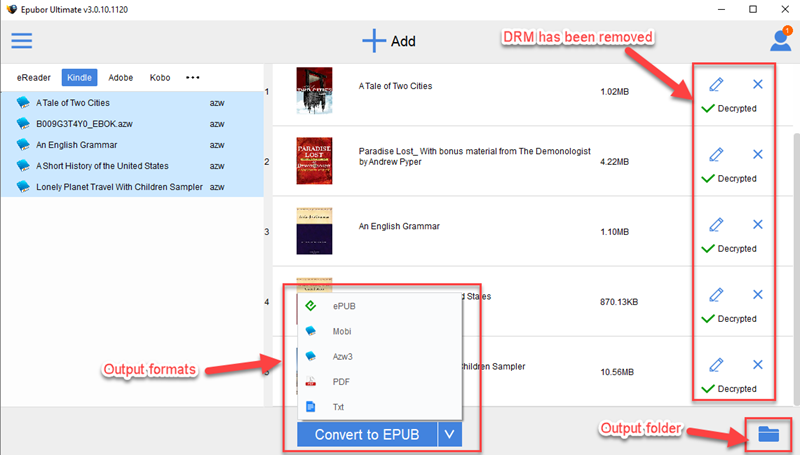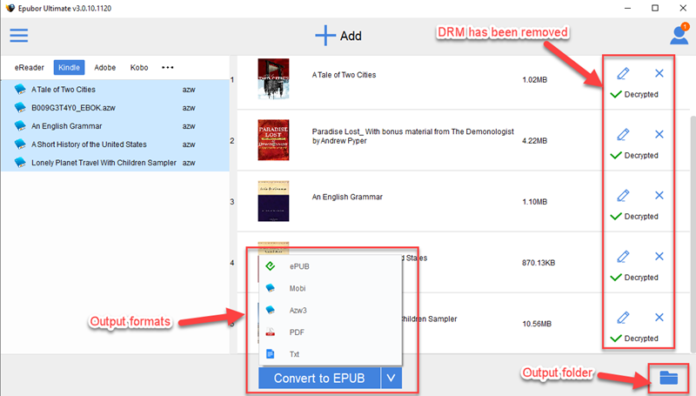
What is DeDRM?
So what exactly is DeDRM? It is short for “De-Digital Rights Management,” and refers to the process of removing digital rights management (DRM) protection from electronic files. DRM is a set of access control technologies used by publishers and copyright holders to restrict the use and distribution of digital content, such as e-books, music, and videos.
Why Use DeDRM?
There are several reasons why individuals might choose to use DeDRM tools:
- Content Portability: To access purchased content on different devices or platforms.
- Backup Creation: To create personal backups of legally acquired content.
- Format Conversion: To convert content into formats compatible with specific devices or software.
- Accessibility: To make content accessible for individuals with disabilities using specialized software.
- Preservation: To ensure long-term access to purchased content, even if the original platform becomes obsolete.
How DeDRM Works
DeDRM tools typically work by:
- Identifying the DRM scheme used on the file.
- Decrypting the protected content using known methods or user-provided keys.
- Removing DRM-related code or metadata from the file.
- Saving the content in an unprotected format.
The specific process can vary depending on the scheme and the tool being used.
Legal and Ethical Considerations
The use of DeDRM tools exists in a legal gray area and raises several ethical questions:
- Copyright Laws: In many jurisdictions, circumventing DRM is illegal, even for personal use.
- Fair Use: Some argue that DeDRM for personal use falls under fair use doctrine.
- Consumer Rights: DeDRM advocates argue for the right to use purchased content without restrictions.
- Piracy Concerns: Publishers worry that DeDRM tools facilitate illegal sharing of copyrighted material.
It’s crucial to understand the legal implications in your jurisdiction before using DeDRM tools.
Popular Tools in De-Digital Rights Management
While we can’t provide direct links or instructions for using these tools, some widely known solutions include:
- Calibre DeDRM Plugin
- Epubor Ultimate
- Requiem (for older iTunes content)
- Kindle DRM Removal
- Adobe Digital Editions DRM Removal
Note that the availability and effectiveness of these tools may change over time as DRM technologies evolve and continuously updated.
Alternatives to DeDRM
Instead of using DeDRM tools, consider these alternatives:
- DRM-free Stores: Purchase content from retailers that offer DRM-free options.
- Subscription Services: Use services that provide access to a wide range of content without DRM restrictions.
- Open Source Content: Utilize open-source or Creative Commons licensed materials.
- Library Services: Many libraries offer e-book lending with more flexible DRM schemes.
The Future of DRM and DeDRM
The landscape of digital rights management is continually evolving:
- Blockchain DRM: Some companies are exploring blockchain technology for more flexible and user-friendly DRM solutions.
- Watermarking: Digital watermarking is emerging as a less restrictive alternative to traditional DRM.
- User-Centric DRM: There’s a growing push for DRM systems that balance copyright protection with user rights and convenience.
- Legal Challenges: Ongoing legal battles and policy discussions may reshape the future of DRM and the legality of using such tools.
By understanding the complexities surrounding DeDRM, users can make informed decisions about managing their digital content while respecting copyright laws and ethical considerations. As the digital landscape continues to evolve, staying informed about DRM technologies and alternatives will be crucial for both content creators and consumers.
Related Articles
Calibre DRM Removal Plugins / NoDRM Fork
Similar Articles from Unixmen





